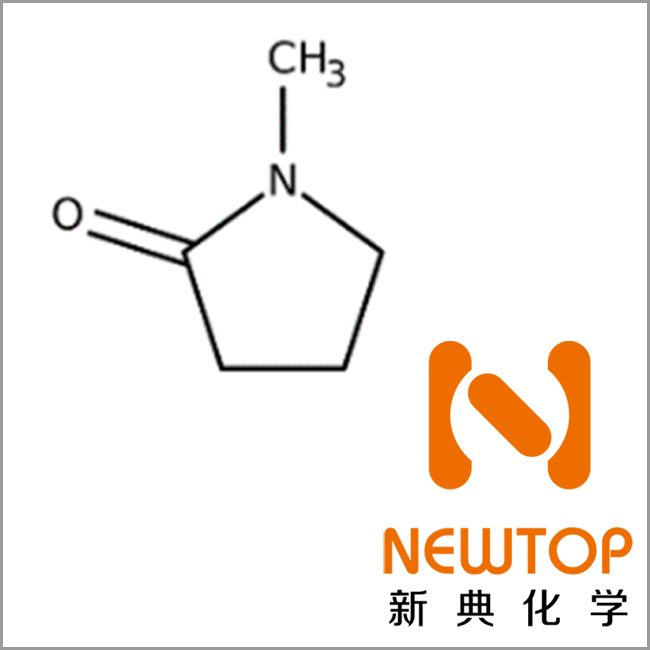N-Methyl-pyrrolidone NMP CAS872-50-4
N-Methyl-pyrrolidone NMP CAS872-50-4
Overview:
N-Methylpyrrolidone is an organic substance with the chemical formula C5H9NO, a colorless to light yellow transparent liquid with a slight ammonia odor, miscible with water in any ratio, soluble in various organic solvents such as ether, acetone and esters, halogenated hydrocarbons, aromatic hydrocarbons, etc., and almost completely mixed with all solvents.
Chinese name: N-Methylpyrrolidone
Alias: 1-Methyl-2-pyrrolidone
English name: N-Methylpyrrolidone
Molecular formula(Formula): C5H9NO
Molecular Weight: 99.131
CAS No.: 872-50-4
Product Name: 1-Methyl-2-pyrrolidone; N-Methyl-pyrrolidine; N-Methyl-A-pyrrolidone; Methyl-pyrrolidone; 1-Methyl-pyrrolidone
Molecular structure: See figure
Molecular formula: C5H9NO
Molecular weight: 99.131
CAS No.: 872-50-4
EINECS No.: 212-828-1
MDL No. MFCD00003193

Physical and chemical properties:
- Property: Colorless transparent oily liquid with slight odor of amine.
- Density: 1.028g/cm3
- melting point: -24℃
- boiling point: 202℃
- Refractive index: 1.470
6 Viscosity: 1.65mPa-s
- Flash point: 86.1℃
- ignition point: 346℃
- heat of combustion: 3010kJ/mol
- critical temperature: 445℃
- critical pressure: 4.76MPa
- electrical conductivity: (1~2)×10-8s/m
- solubility: soluble in water, ethanol, ether, acetone, ethyl acetate, chloroform and benzene, soluble in most organic and inorganic compounds, polar gases, natural and synthetic polymers
Uses:
It is widely used in the refining of advanced lubricants, synthesis of polymers, insulating materials, pesticides, pigments and cleaning agents, etc.
Application 2】 It is an excellent solvent, widely used as extractant for aromatic hydrocarbon extraction, lube oil refining, acetylene concentration, synthetic gas desulfurization, etc. It is also used for industrial cleaning, etc.
N-Methylpyrrolidone is an excellent extraction solvent, widely used as extractant in the process of aromatic extraction, acetylene concentration, butadiene separation and desulfurization of synthesis gas, etc. It is also a solvent in the production of pesticides, engineering plastics, paints, synthetic fibers, integrated circuits, etc. It can also be used as industrial detergent, dispersant, dyeing agent, lubricant antifreeze agent, etc. The product has low toxicity, oral LD50 for rats is 7ml/kg.
Stability related:
- Colorless liquid, with ammonia smell, the product has low toxicity. It can be miscible with water and soluble in most organic solvents such as ether and acetone. Can dissolve most organic and inorganic compounds, polar gases, natural and synthetic polymer compounds.
- Chemical properties: relatively stable in neutral solution. After 8 hours in 4% sodium hydroxide solution, 50%-70% of it is hydrolyzed. In concentrated hydrochloric acid, hydrolysis gradually occurs to produce 4-methylaminobutyric acid CH3NH(CH2)3COOH. due to the reaction of carbonyl group, it can produce condensation ketone or thio-pyrrolidone.
N-Methylpyrrolidone is weakly basic and can produce hydrochloride. It forms adducts with heavy metal salts, for example, with nickel bromide heated to 150°C to produce NiBr2(C5H9ON)3 with a melting point of 105°C.
Storage and transportation:
Should be kept sealed and stored in dry, cool and ventilated warehouse
Package:
200KG/drum Storage: It is recommended to be stored in dry and cool area with proper ventilation. Please fasten the lid of the package as soon as possible after the original packaging to prevent the mixing of other substances such as moisture from affecting the product performance. Do not inhale dust and avoid skin and mucous membrane contact. Smoking, eating and drinking are prohibited in the workplace. After work, shower and change clothes. Store contaminated clothes separately and wash them before use. Maintain good hygiene habits.


